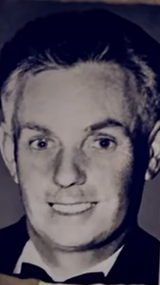
1947 - 1990
Graham Frederick Young
Summary
Name:
Nickname:
The Teacup PoisonerYears Active:
1961 - 1971Birth:
September 07, 1947Status:
DeceasedClass:
Serial KillerVictims:
3Method:
PoisoningDeath:
August 01, 1990Nationality:
United Kingdom
1947 - 1990
Graham Frederick Young
Summary: Serial Killer
Name:
Graham Frederick YoungNickname:
The Teacup PoisonerStatus:
DeceasedVictims:
3Method:
PoisoningNationality:
United KingdomBirth:
September 07, 1947Death:
August 01, 1990Years Active:
1961 - 1971Date Convicted:
June 29, 1972bio
Graham Frederick Young was born on September 7, 1947, in Neasden, Middlesex, England, to Frederick and Bessie Young. He had an older sister named Winifred. Tragically, Bessie died from tuberculosis when Graham was just fourteen weeks old. After her death, he was sent to live with an uncle and aunt, while Winifred went to live with their grandparents. A few years later, their father remarried, and the family came back together.
From an early age, Graham showed an unusual fascination with poisons and their effects. He admired Victorian poisoners like William Palmer. As a child, he also read about topics such as black magic, Adolf Hitler, and Nazi Germany. In 1959, he passed his eleven-plus exam and started attending grammar school, where he began to explore books on advanced toxicology.
In early 1961, Graham managed to acquire antimony, a toxic substance, from a local chemist. He signed the poisons register using a false name, believing the chemist thought he was older than he really was. By February of that year, Graham had started poisoning members of his family. His stepmother Molly began to suffer from severe stomach pains, vomiting, and diarrhea, which she initially thought were common health issues. Soon, his father also experienced similar symptoms, which left him bedridden for days. His sister Winifred fell ill a couple of times during the summer of 1961, and Graham himself became violently sick.

Things took a serious turn in November 1961 when Winifred tasted something sour in a cup of tea Graham had served her. After a short train ride, she began hallucinating and had to go to the hospital, where she was diagnosed with poisoning from Atropa belladonna. This raised suspicions about Graham’s involvement, but when confronted, he made excuses, claiming Winifred had mixed shampoo in their cups.
On Easter Saturday, April 21, 1962, Molly Young died. Initially, her death was attributed to unrelated health issues, but later, Young claimed he had poisoned her with thallium. During her wake, he allegedly poisoned another relative by adding antimony to mustard pickle. Shortly after, his father suffered severe illness and was hospitalized with antimony poisoning; doctors warned that another dose would have been fatal.

Graham's fascination with poisons did not go unnoticed. His aunt and a science teacher at his school became suspicious after discovering bottles of poison in his possession. This led to an interview with a psychiatrist, who contacted the police about Graham's knowledge of toxicology.
On May 23, 1962, Graham was arrested after returning home from school. During questioning, he confessed to poisoning his father, stepmother, sister, and a friend. Psychiatrists concluded that he had a psychopathic disorder. Young was found guilty of poisoning his family and was committed to Broadmoor Hospital, a high-security psychiatric facility, where he became one of the youngest inmates in the institution's history. At Broadmoor, he continued to study poisons and even became involved in suspicious incidents that raised alarm among staff.
Over the next several years, Graham Young's early life was marked by a profound interest in toxicology, a lack of emotional connection with others, and a series of alarming behaviors that foreshadowed the darker path his life would take.
murder story
At the age of 14, Graham Young was detained at Broadmoor Hospital for poisoning his family. During his time there, another inmate, John Berridge, died from cyanide poisoning, and suspicion fell on Young because of his knowledge of poison extraction. However, no conclusive evidence connected him to Berridge's death, which was ruled a suicide. Young continued to study toxicology and exhibited peculiar behavior, including an interest in Nazism.
After being released in 1971, Young resumed his fascination with poisons. He obtained thallium and antimony from a chemist under false pretenses. Young then found work as a storekeeper in Bovingdon. There, he began poisoning his colleagues. The poisoned tea he served caused many to fall ill with symptoms attributed to a viral outbreak, which later became known as the "Bovingdon Bug."

Young's first confirmed victim at work was Bob Egle, his boss. Egle fell ill after consuming poisoned tea and died on July 7, 1971. His death was initially misdiagnosed as a rare neurological syndrome. Over the following months, Young poisoned several coworkers, causing serious illnesses.
The investigation into the source of the illnesses intensified after Fred Biggs, another colleague, succumbed on November 19, 1971. At this point, a cluster of hospitalizations raised alarms among the management, prompting an investigation. Some of Young's coworkers began to suspect him due to his knowledge of poisons and his peculiar behavior.

On November 20, 1971, Young was arrested. At his flat, police discovered numerous poisons and a detailed diary documenting his poisonings. During interrogation, he admitted to the poisonings and even boasted about his methodical approach, claiming he had performed the "perfect murder." He was charged with two counts of murder and several counts of attempted murder.
Young's trial began on June 19, 1972. The evidence against him included traces of poison found in the remains of his victims and his own admissions of guilt. On June 29, 1972, the jury found him guilty. He was sentenced to life imprisonment, initially held at Parkhurst Prison.
Young died in prison on August 1, 1990. The cause of death was reported as a heart attack, though some speculated about foul play or suicide. His case sparked significant discussions regarding the treatment and release of mentally ill offenders, resulting in changes to laws concerning the sale of poisons and the monitoring of released individuals.